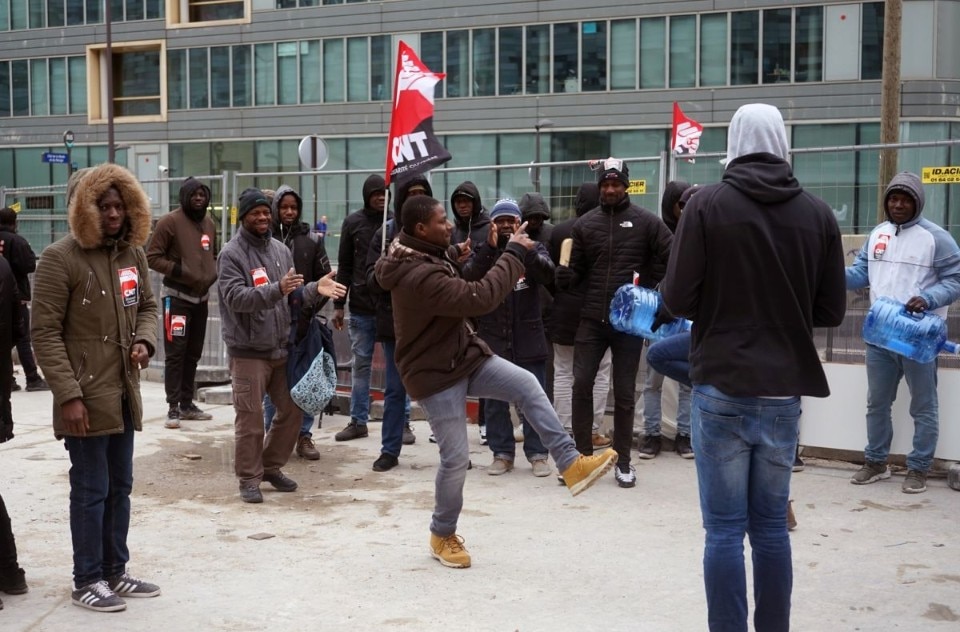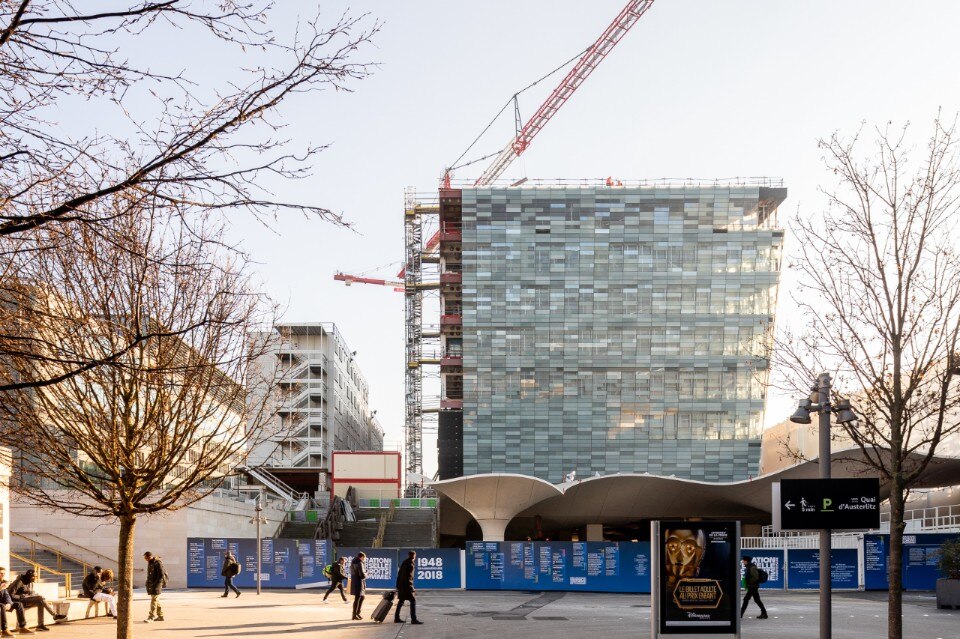The occupation of the facility that will host Paris’ daily newspaper Le Monde has been going on since 6 a.m. of 27 February 2020. Some spaces on the ground floor of the building designed by Snøhetta “welcome” activists, trade unionists and some of the 30 undocumented workers who were working on the construction of the new office complex.
The story was documented by the Parisian architect and publisher Léopold Lambert, who wrote an open letter to the Norwegian firm on The Funambulist magazine: “About 30 undocumented workers have been hired by two subcontractors (CICAD and Golden Clean) of the fifth largest construction company in Europe, the infamous Eiffage, which has been hired by Le Monde for the construction of the steel structure and facade of ‘your building’.”
The petition signed by hundreds of architects, researchers and activists from around the world — including some former Domus contributors — calls for regularisation, fair payment and better conditions for workers. Lambert asks Snøhetta to openly state their position: “as the architects of Le Monde’s headquarters, you are part of the entities politically responsible for the conditions of labor in which your design is being materialized. As such, you cannot claim neutrality.”
This letter was answered by Kjetil Trædal Thorsen, founder of the firm, who states: “We are saddened and caught off guard by the news about the situation for the cleaning personnel on the Le Monde Group Headquarters building site. We support the personnel’s demands for fair treatment and urge for an agreement that ensures that working regulations are respected. (…) We will continue to do our utmost to make sure that workers’ rights are respected. This incident is an important reminder that both we and the building industry must work even harder to prevent unjust treatment of workers – both today and in the future.”
Negotiations between companies and workers continue, but with poor results. The peaceful protests of the occupiers do not seem to be heard by the companies, so that from today the protesters will try to block the entire construction site.

This is not the first time that the world of contemporary architecture has been confronted with workers’ rights. One example was the Al Janoub Stadium construction site in Qatar, completed last year by Zaha Hadid Architects, where migrant workers suffered injuries or died due to poor working conditions. In February 2014, Hadid attracted criticism by denying responsibility in her role as an architect in an interview with The Guardian: “What do I do about that? I’m not taking it lightly, but I think it’s for the government to look to take care of. It’s not my duty as an architect to look at it.”
These topics are also tackled by Who Builds Your Architecture?, a New York architects and activists’ collective that explores “links between labor, architecture and the global networks that form around building buildings”.
More recent is the #archishame case, which erupted in June 2019 for the presentation of the latest Serpentine Pavillion, designed by Junya Ishigami. Pressurised for not paying the interns who worked on the prestigious commission, the Japanese architect then compensated his employees and declared that he would now pay all the architects in his office, overcoming the deep-rooted “tradition” of not remunerating the interns.
The site of the Le Monde headquarters reminds us of how important it is to also consider the social sustainability of buildings, and that every single step in the construction process must respect the principles of fairness and respect.
According to Domus’ new editor-in-chief, David Chipperfield, “we should see our moment as an opportunity to realign our priorities, to consider how we might reposition the practice of architecture and its role in society. This comes not through sacrificing architecture’s physical and formal potential, or even its representative importance, but by focusing innovation, research and imagination in a more responsible manner, celebrating societal infrastructure rather than commercial leverage, and coming together as citizens.”
“Societal inequality, environmental sustainability, and connected to that is community, the fact that we have eroded the fundamental importance of community”: these are the topics that the British architect addresses in the issues of the magazine throughout 2020. More than ever, we need critical voices that encourage us to take a fresh look at the complexity. We work so that ethics and aesthetics can converge in a new unity in architecture as well.
You can read the full text of the open letter and Snohetta’s reply on www.thefunambulist.com


